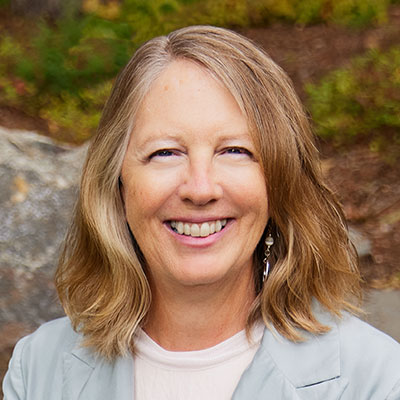
Connection is a basic human need. Physically, we exit the womb actively looking for and studying human faces. Spiritually, we have a place inside that can only be filled by connection with the Divine. There are myriad pathways to connect in either of these dimensions, but one of the oldest known to humankind is sacred ritual, also known as sacred ceremony.
The terms sacred ritual and sacred ceremony are often used interchangeably, and they are highly related. Trying to sort this out in my head led me to consult dear old Merriam-Webster. One definition of ritual, I find, is an “act or series of acts regularly repeated in a precise manner,” while ceremony is a “formal act or series of acts prescribed by ritual, protocol or convention.” The operative word that differentiates the two, I think, is “formal.” For me, ritual is more regular, like trimming the Christmas tree, while ceremony is a once-in-a-lifetime event, like todays Great Saturn-Jupiter conjunction. Sacred, by definition, is being “dedicated or set apart for the service or worship of a deity; entitled to reverence and respect.” Throw in the word tradition, “an inherited, established, or customary pattern of thought, action, or behavior”, and we have a group of words that describe a treasure trove of human interrelations, relationship to self, and relationship to all that is, seen and unseen.
If we remove the word sacred from in front of it, we see that “ritual” defines the underpinning of our days, weeks and months. From our morning cup of coffee or tea to the way we bathe ourselves, from how we celebrate holidays to where we take yearly vacations, and with whom, we structure our connections to ourselves and each other in tightly woven ways. We are performing our own rituals. Traditions are simply established rituals. Ceremonies more formal rituals. Replacing the word sacred in front of ritual or ceremony merely denotes a change in intention to connect to the Spiritual rather than the physical. What differentiates a ritual from a habit – “an acquired mode of behavior that has become nearly or completely involuntary?” I would suggest it is the attention to, and/or intention of, the action itself.
However we use the words to describe what we are doing, we can see that the action involved creates the connection we crave. And because we are physical beings, we can imbue any action with “sacredness.” For example, if we make a cup of tea to drink as we sit and read holy scripture then making the tea has become part of our sacred ritual of Divine engagement. Or, if making and drinking the tea settles our body, mind and/or spirit, and readies us for the challenges of the day, then I think it also becomes a sacred act. Self-care, after all, is ultimately about self-reverence and self-respect. Not that we are worshipping ourselves, but rather we are connecting to, and uplifting, the inner-most part of our Being.
Nine months into this global pandemic, we are all more aware of, and often struggling with, maintaining our connections on every level. We have been forced into changing nearly every aspect of our daily and communal lives, from having our regular morning commute suspended to streaming yoga class and church into our living rooms instead of attending in person. Weddings and holiday parties are canceled, downsized or “virtual” experiences. Our local cashiers friendly smile is hidden from view under their mask. Even trick-or-treating got a makeover this year. Our habits, rituals and ceremonies have all been upset.
And yet, there is beauty and opportunity in what we are experiencing. We are learning, personally and as a society, about our priorities. What interactions and daily rituals do we truly miss and can’t wait to resume? Which ones are we realizing were a burden and are happy to jettison? How will we choose to celebrate Christmas? What are we hoping to create as this year ends and a new one begins?
Back in March, when it was obvious the pandemic would upend Holy Week and Easter services, I wrote “This is a unique opportunity to embody and ground the Spirit into our homes and everyday lives in a way we haven’t been able to for years, or even centuries.”
This is as true today than it was then. I would propose that it has always been true – we may have just forgotten how deeply and fully we can create meaning in our own lives and homes. Sacred ritual and ceremony have traditionally been enacted by the spiritual leaders raised up from the community for this purpose – priests, pastors, rabbis, shamans, medicine men and women, etc. We will always need these dedicated individuals who serve and care for the spiritual needs of others, but at the same time we cannot forget that we embody the Divine within ourselves, and act accordingly. When we are cut off from traditional paths of spiritual practice we must act as our own leaders or risk losing connection altogether. We need Spiritual bonding now more than ever, to center and ground us through these turbulent and deeply changing times.
So, how do we create sacred ritual and ceremony, for ourselves and others?
Rituals can be simple or more complex; ceremony, with its formal nature, can require more preparation. Both have a few basic components; creation, preparation, action and closure.
Creation:
– The first step is to set a specific intention. This is the “why” part.
The one overriding precept in creating sacred ritual or ceremony is to follow your heart and instinct. They will not mislead you and you will create exactly what you need at the time.
Among the reasons we create sacred ritual and ceremony are: celebrating a change in relationships, marking the beginning or end of a major life transition, chapter or passage, help with a problem, creating shared communal experience, changing or emphasizing a spiritual belief, or celebrating a religious holiday. One example of secular ceremonies imbued with sacred meaning are graduations. An example of a personal, faith-based ritual dates from when our children were young. I wanted them to understand, contrary to the dominant US culture, our faith tradition celebrates Christmas for 12 days, beginning Dec. 25th. On the spur of the moment, I bought them books, labeled them “12th day” and we opened them on Jan. 6th, the Feast of the Magi (Three Kings). This yearly ritual endures 30+ years later as an unwavering family tradition, proving that the intention and action parts aren’t always time-consuming, or even well-thought out in advance!
Preparation:
Once you have the basic intent you may need to prepare in other ways. A few examples would be buying or wearing special clothing or jewelry, purifying the body by bathing or other means, procuring a special space or area, gathering tools or devices such as firewood, candles, etc. If your ceremony involves dancing or singing you may need music or instruments. These days, you might have to create a Zoom invitation for your guests! It can be as plain or as extravagant as you desire.
Action:
When you have all your supplies in place it’s time to take action. This is usually done in the following order –
– Create a safe and sacred space. Visualize the boundaries of the area you’re using, be it outside or inside. Feel free to use your hands to establish the walls or borders around, above, and below you, as if you’re painting them into place. Lighting candles and burning incense are eons-old practices of dedicating a space to the sacred. Use all your bodily senses, including feeling what is supporting you (chair, ground, floor) to connect with the space. Envision an anchor, root or other device securing your tailbone to the earth, providing stability.
– Ask for help; invite your friends. God(s) and/or Goddesses, Jesus or other Masters, ancestors, Mother Mary or other saints, spirits, guides and other special Beings. I like to use the words “any being that has my highest good as their deepest intent is welcome.” I’ve had interesting and unexpected responses to this petition over the years, by the way, including unfamiliar dogs coming and lying beside me.
– State your intent. Why are you here? What is it you wish to change, shift, acknowledge, release, celebrate or grieve?
– Perform the ceremony. If you feel drawn to change it in any way, even right in the middle of enacting it, follow your Heart and do it.
– Say thank you. I like to thank all those who have shown up, in body and in spirit. Literally, I bow my head, place my hands on my heart, and voice “thank you.” A friend recently told me they send a monetary donation to a spiritual organization as their way of showing gratitude.
Closure:
-End the ceremony. Re-open the spatial barriers you’ve created. Extinguish the candle and incense, put out the fire. Physically leave the space you’ve been using, or close the door to the room, or get up from the chair. Closure may be as simple as opening your eyes, or voicing a word or phrase, such as Amen, Namaste, or And so it is. Again, your heart and instinct will show you all you need to know.
Rest assured that rituals and ceremonies are important parts of our human experience. If they weren’t we wouldn’t have been using them for over 70,000 years! To reiterate the words my colleague Meghan Gilroy wrote on the Au Soleil Healing sacred ritual page several years ago – “Sacred ritual gives meaning to our lives.”
May you find deep meaning in your personal and collective human experience this holiday season and far into the future!

